Many paintings that come to our studio have been in a family for decades, hanging on a wall of a home as a mysterious piece that has simply always been there. Others may have been recently purchased at an auction or antique shop, leaving the new owner to question its origin and age.

Due to this, we are often approached by clients who not only want their painting to be protected, but fully explored to understand the date, artistic themes and materials. This can be achieved with a bespoke technical examination, put together by our easel painting conservator and art historian. This article will look into what a professional report can provide you with, from an in-depth look at the pigments of a painting to the often complex social and artistic history found within an antique or modern composition.
 Technical photography
Technical photography
One of the initial parts of a technical examination is the use of photography to document and view the painting under various forms of light. These different techniques allow our conservator to see any previous alterations, unusual pigments and any structural deformations.
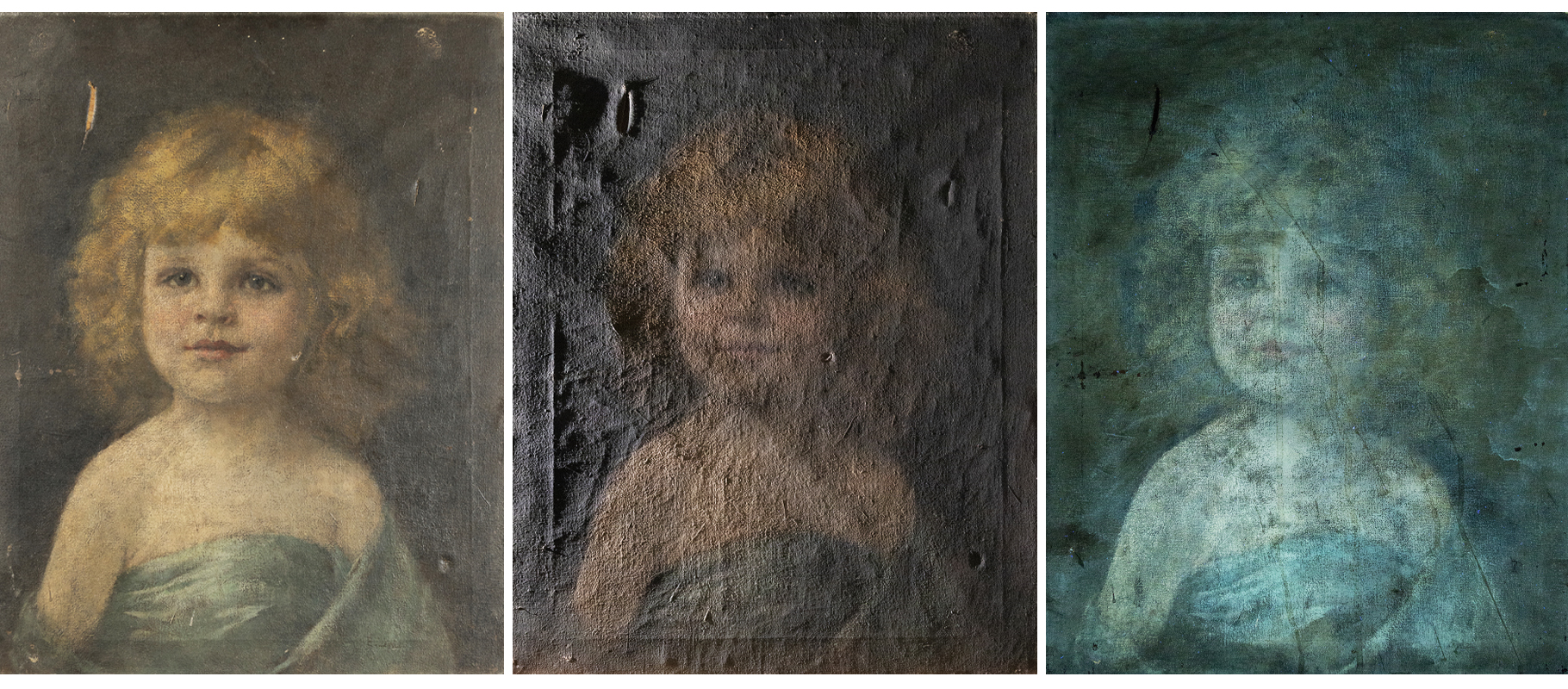
The first photograph will be taken of the painting (front and back) in natural light. This gives us a good reference point during the process and allows you to hold a high resolution digital copy of the artwork to aid in its future preservation. If you are having restoration work completed alongside your report, this will also help to capture the painting before and after conservation treatments have taken place.
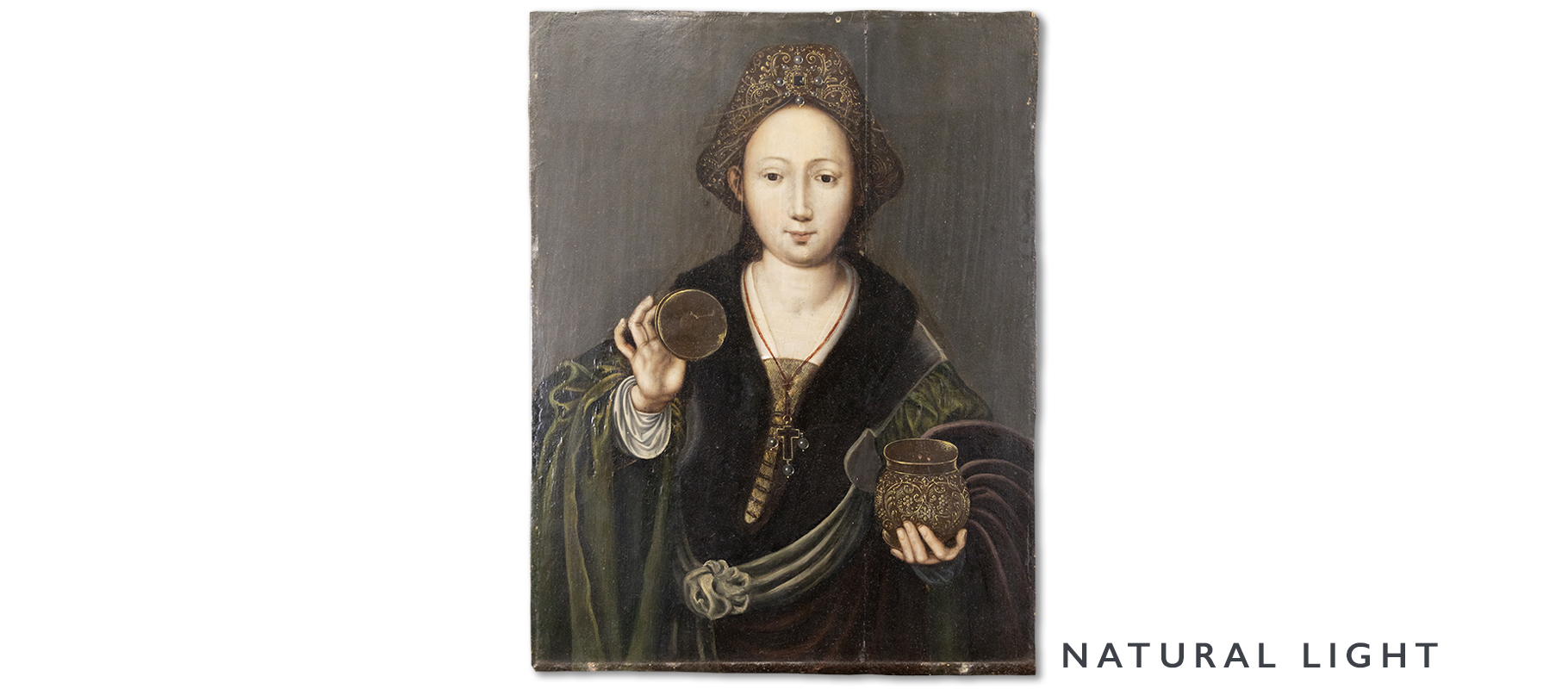
The painting can then be photographed in raking light. This is when a bright light shines across the painting in such a way that we can see the texture and movement of the surface. On paintings that have a tear or other forms of damage this is usually uneven and deformed, whilst secure and well-preserved paintings should have a flat and even surface.
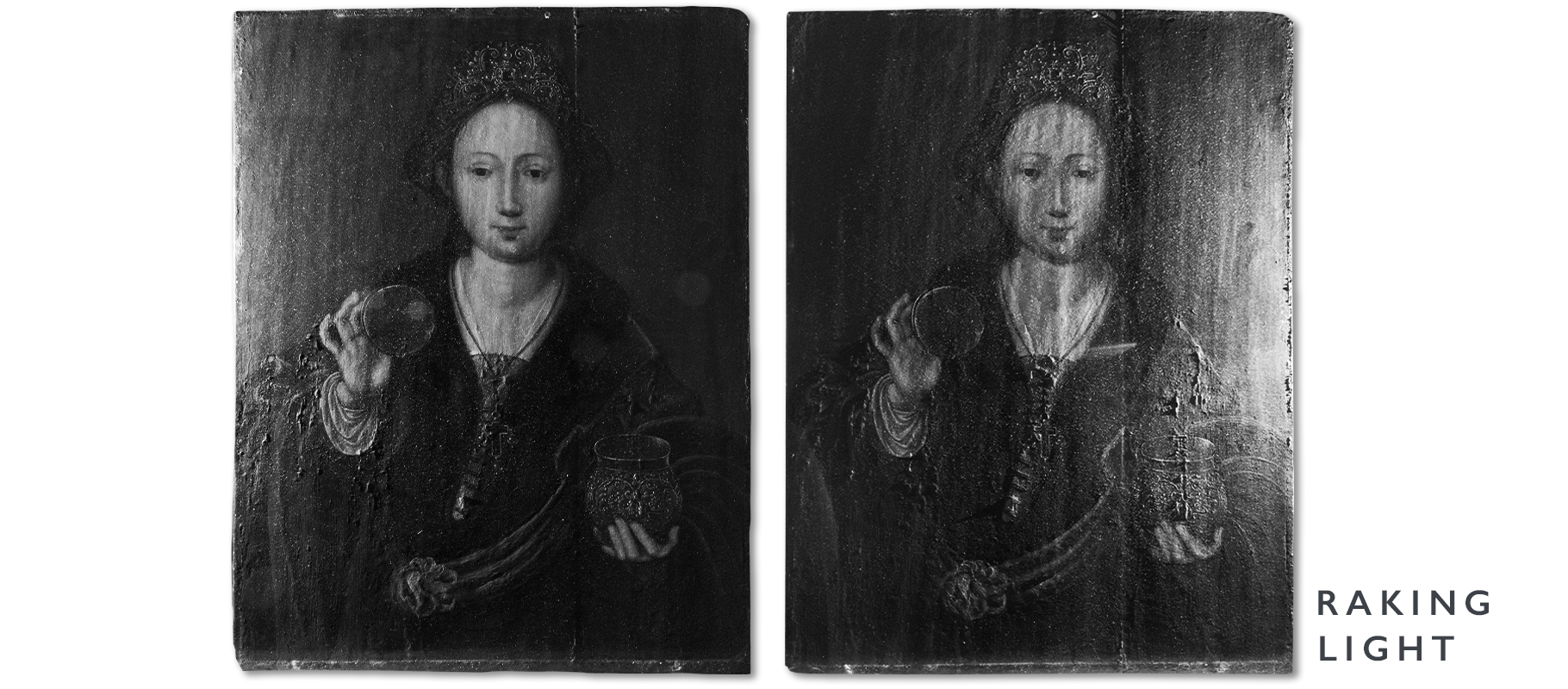
Raking light can also highlight areas of impasto and the brushstrokes of the artist, this may prove helpful in assessing the history and composition of the piece alongside any artist indication you may have or any signature that is found in the process.
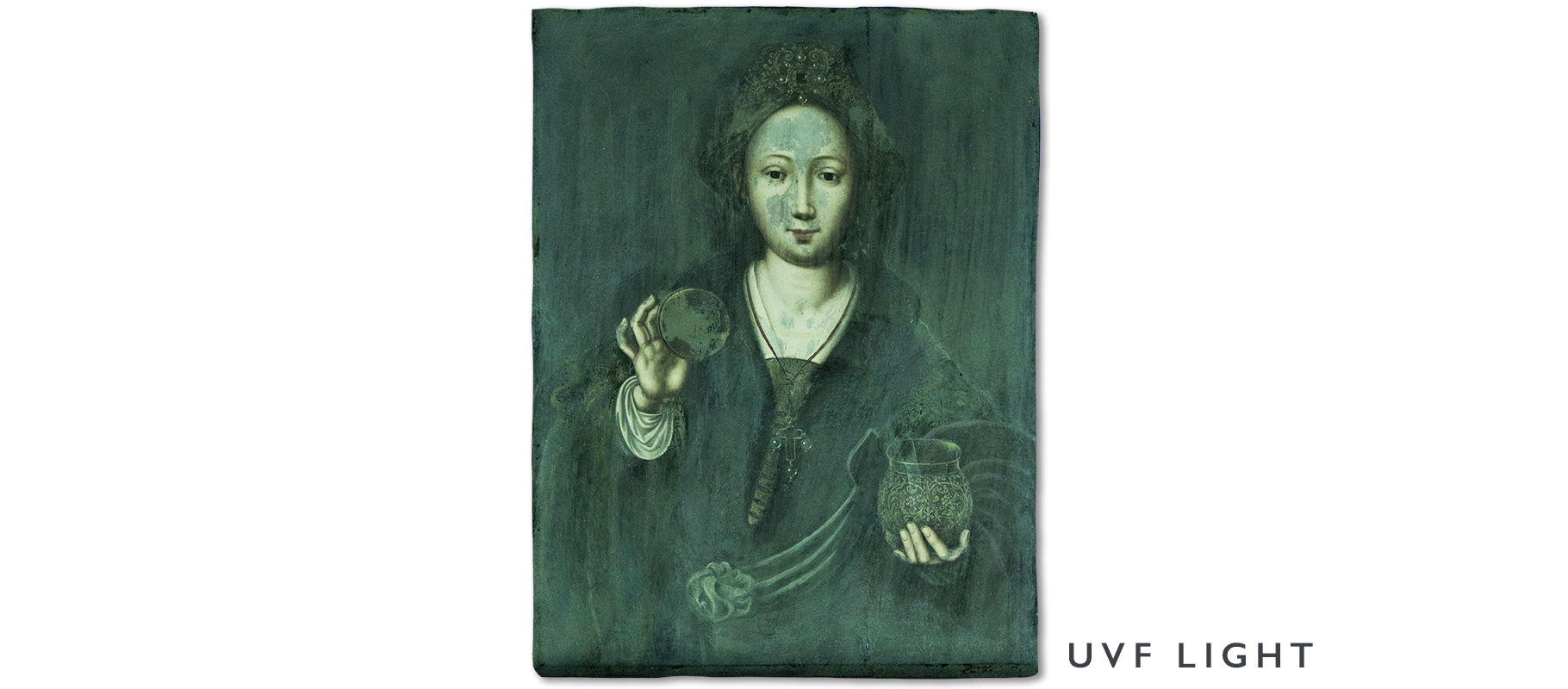
One of the most frequent forms of visual assessment is the use of a Ultraviolet Fluorescence (UVf) light source. When the painting is photographed under UV light sources, our conservators can see the fluorescence/absorption of different varnish layers, pigments and areas of past intervention, such as overpainting. This will help you to understand how your painting may have been altered in the past and inform our conservators about areas that may require additional treatments or a more sensitive approach.
 Above: our conservator Sophie assessing a painting in our studio
Above: our conservator Sophie assessing a painting in our studio
Art history and themes
One of the most eye opening parts of an analysis may be the historical reading of your painting, whether this is in the themes of the subject or the cultural landscape that may have surrounded its creation. Our team will look into the artistic genre of your painting and provide bespoke research on the important connections between the artwork and its context within art history.
 Above: examples of the art history and analysis included in our technical reports
Above: examples of the art history and analysis included in our technical reports
In some cases, a figurative or abstract scene can be interpreted through art historical concepts and allegories that may be inaccessible to the untrained eye. Our technical examination team includes an in-house art historian alongside professional conservators to give you the most well-rounded view of an artwork.
 Above: our team discussing various paintings in our care
Above: our team discussing various paintings in our care
Research carried out by our team may lead them to contact museums and institutions on your behalf, as was recently the case with a small landscape depicting the Henfield Sandpits. Our team spoke with experts at the Henfield Museum to gather information and evidence to assist in dating the painting based on local landmarks. The collections of museums around the world will also be compared and contrasted with your artwork to support or contrast findings and to provide further context.
 Above: our conservator Sophie analysing a painting in our studio
Above: our conservator Sophie analysing a painting in our studio
Pigment analysis and cross sections
A pigment is simply the colour that has been mixed with a binding agent to create paint. As these colours have been derived from various sources over time, we can use the pigments of your painting to analyse its history and potentially its origin.
 Above: pigments under microscope
Above: pigments under microscope
When it is safe to take a pigment sample, our conservators can examine it under microscope under different conditions to try and establish its exact classification. This can be compared and contrasted with named pigments in professional databases. For more information on pigment analysis, please click here.
 Above: our conservator viewing a painting under microscope
Above: our conservator viewing a painting under microscope
A cross section can also be taken of your painting, if there is an area from which this is safe to be taken. This can give us further information into the structure of the artwork, as it will show our conservators under microscope the many layers that may be hiding under the surface of the artwork. Using historical knowledge and research, this will help our conservators to not only have a better understanding of the composition, but also the era it may have originated from. For more information on cross sections, please click here.
 Above: an archive of pigments
Above: an archive of pigments
Assessing the condition of your painting
A full condition report can be a very helpful tool when you are considering the preservation of an important artwork, the insurance costs or as a preliminary step towards applying for conservation funding. In the past, our team has provided bespoke condition reports to help in all manner of cases, from the assessment of a full collection following a household disaster to the analysis of paintings that went on to successfully secure a grant from the Historic Houses Foundation with our assistance.
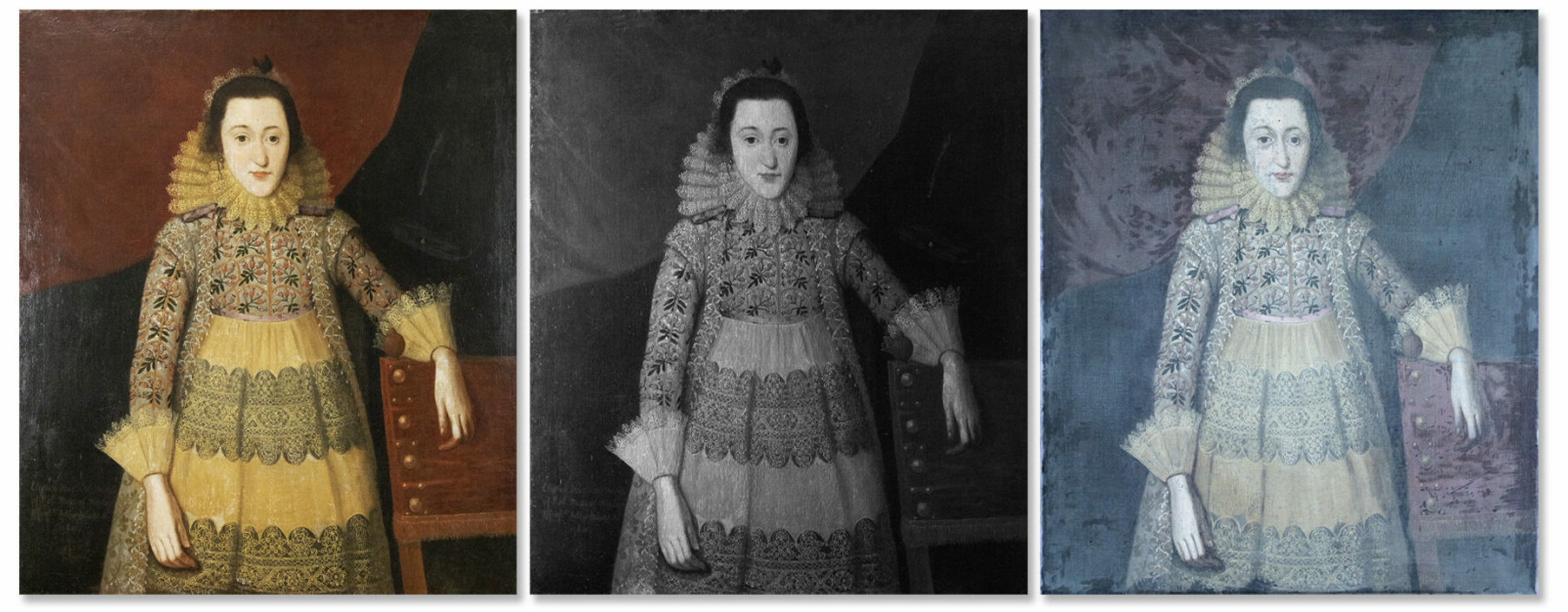
A condition report will look at several aspects of your painting such as the structural stability of the stretcher bars, the canvas lining and the paint layer. Our conservators are trained in spotting aspects that may fail or deteriorate over time, helping you to make decisions towards conservation treatments or adjustments to its display location.

Condition reports also create professional documentation for your painting in its current and restored state. Our conservators can look into any previous alterations that may have been made, such as areas of over-painting and old repairs. A report will be made on the treatments used in their own conservation work alongside this to assist future owners and conservators in their preservation efforts.
 Above: a detail from a Victorian portrait photographed under ultraviolet light
Above: a detail from a Victorian portrait photographed under ultraviolet light
Condition reports include the following:
- Full photographs of the front and back of the painting
- Documentation of any identification details (signatures, inscriptions)
- Identification of deteriorating areas and damage
- Description of the potential causes of damage (accidental, material failure, etc.)
- Detailed photographs of areas of damage
When you require a condition report for a specific case, for example the application of funding, we are able to adjust the report to fit in with the paperwork you need to complete. Please speak to our team about how we can guide you through processes such as this.
 Above: our conservator Sophie assessing a painting in our studio
Above: our conservator Sophie assessing a painting in our studio
What do our clients say?
“My delightful little pair of oils under glass had some age deterioration it was apparent they had never been tampered despite being framed over a century ago. Might there be clues internally on who, whence and where? A curious owner but knowingly ham-fisted, terrified of likely damage, in desperation sought the help of Fine Art Restoration Company.
We need not have worried! Conservator, art historian and rest of the team rose to the challenge with an expert technical assessment and condition report: description, any inscriptions, context and historical background, technical photography, painting materials and methods, condition assessment and recommended future works for consolidation, repair and conservation, Wow. The paper report so well presented almost a work of art in its own right, a delight deserving of congratulations to the team as a whole.”
– Malcom Ramsdale, technical report client
If you have any queries about this article or the services our team can provide, please email us via [email protected] or call 0207 112 7576

 Technical photography
Technical photography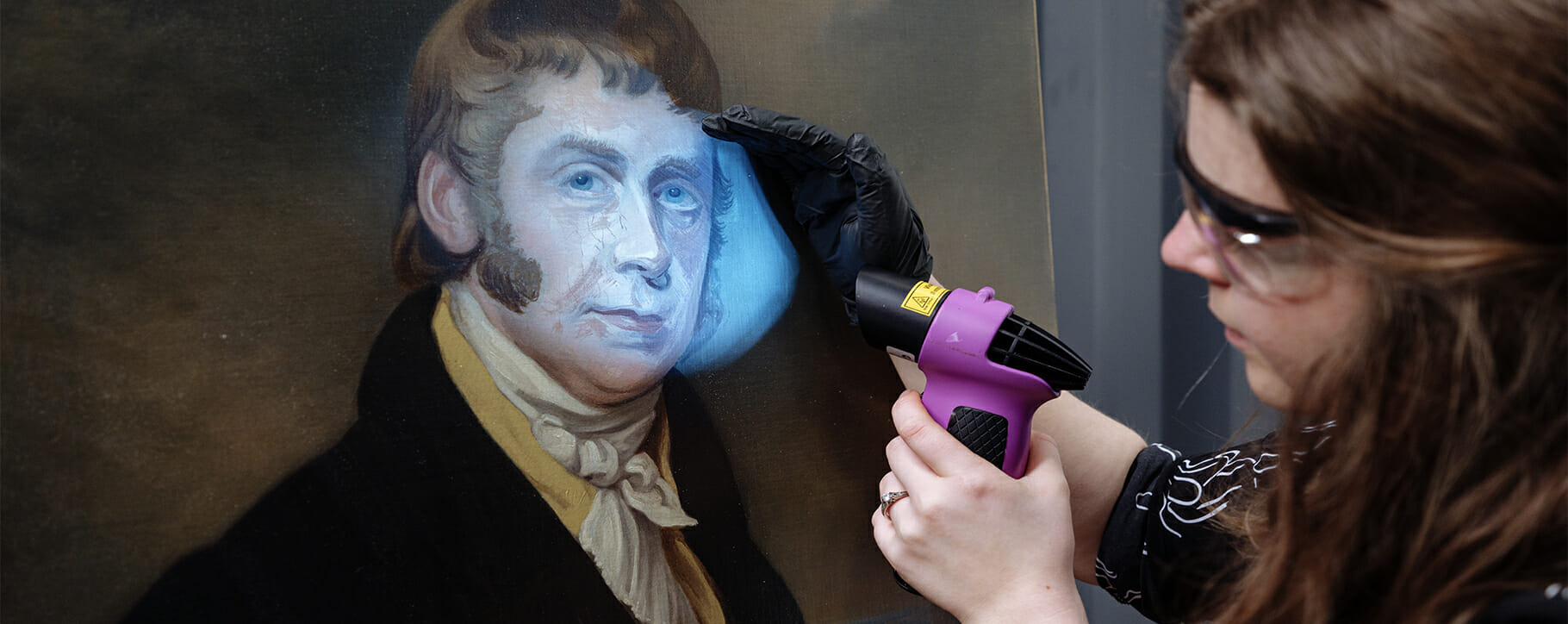 Above: our conservator Sophie assessing a painting in our studio
Above: our conservator Sophie assessing a painting in our studio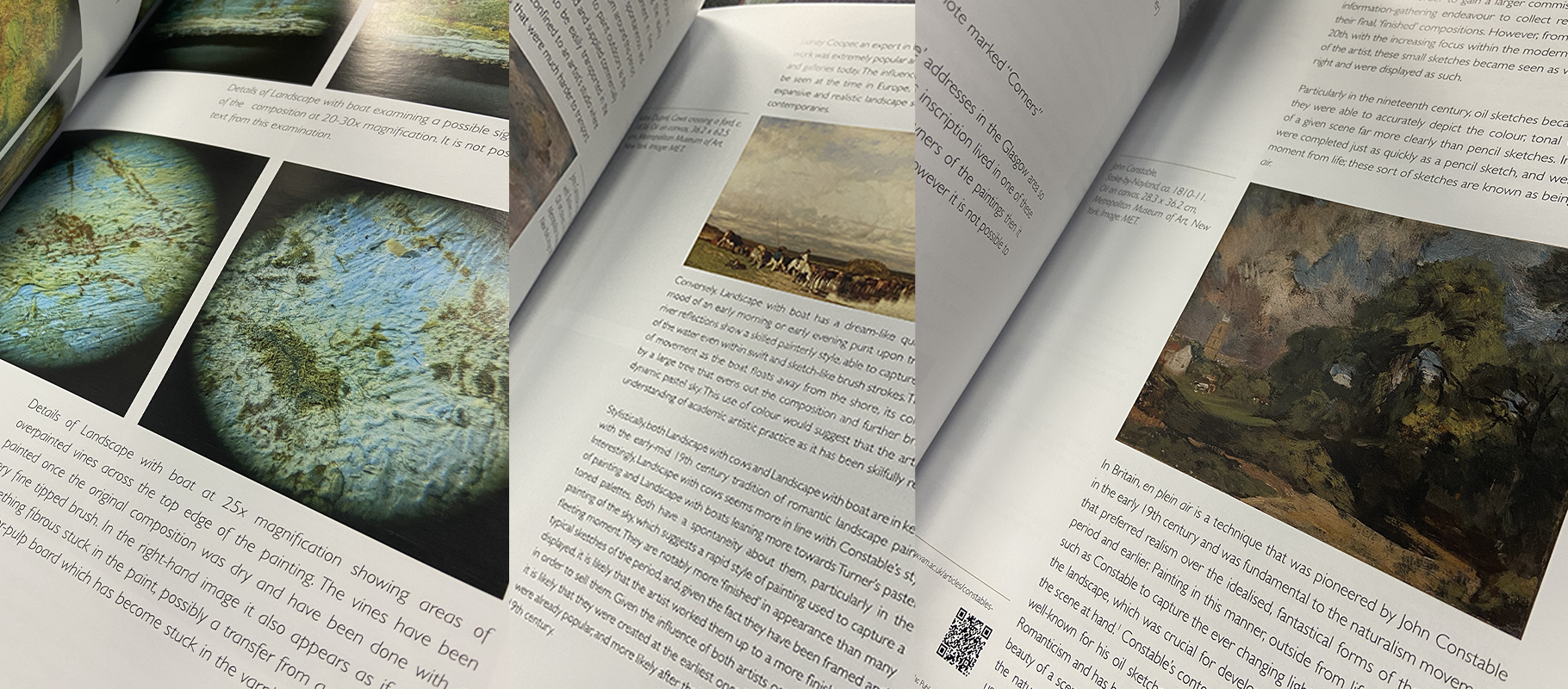 Above: examples of the art history and analysis included in our technical reports
Above: examples of the art history and analysis included in our technical reports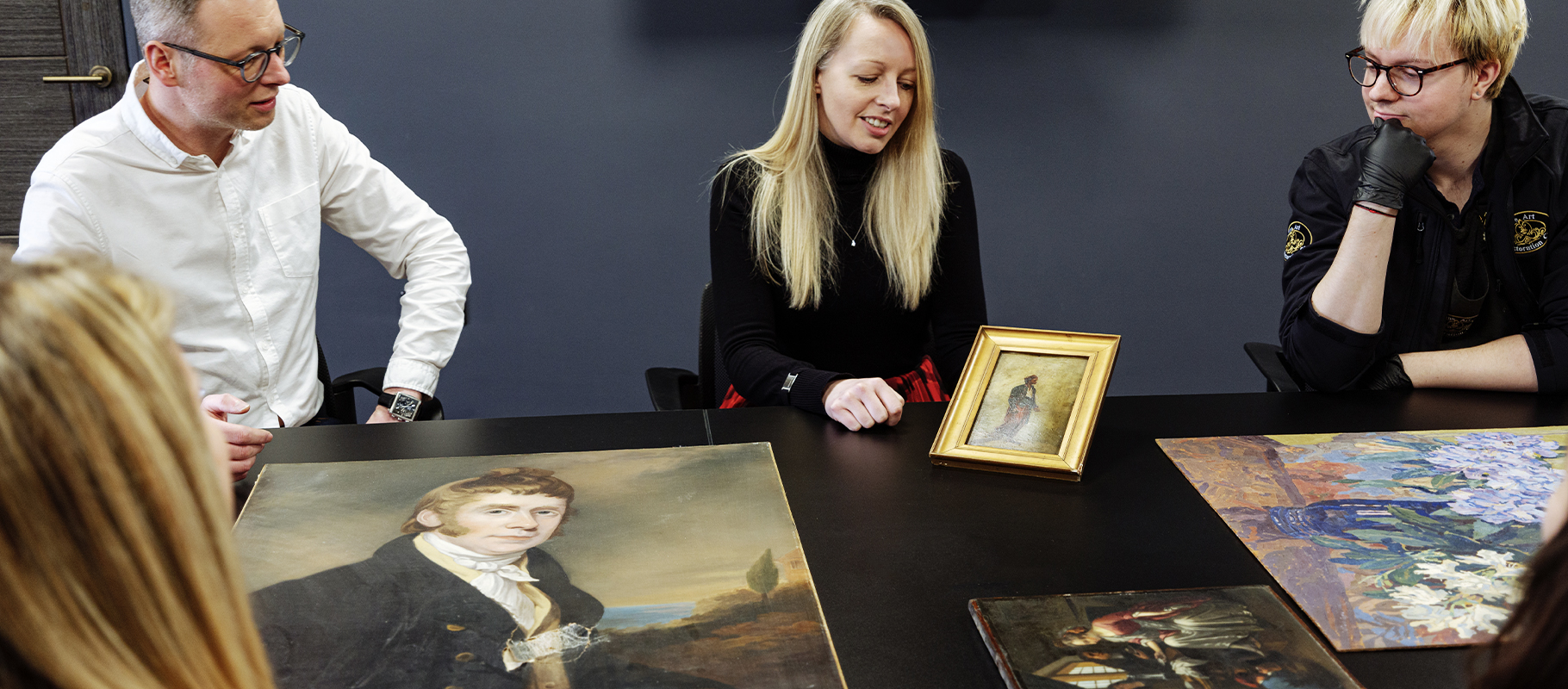 Above: our team discussing various paintings in our care
Above: our team discussing various paintings in our care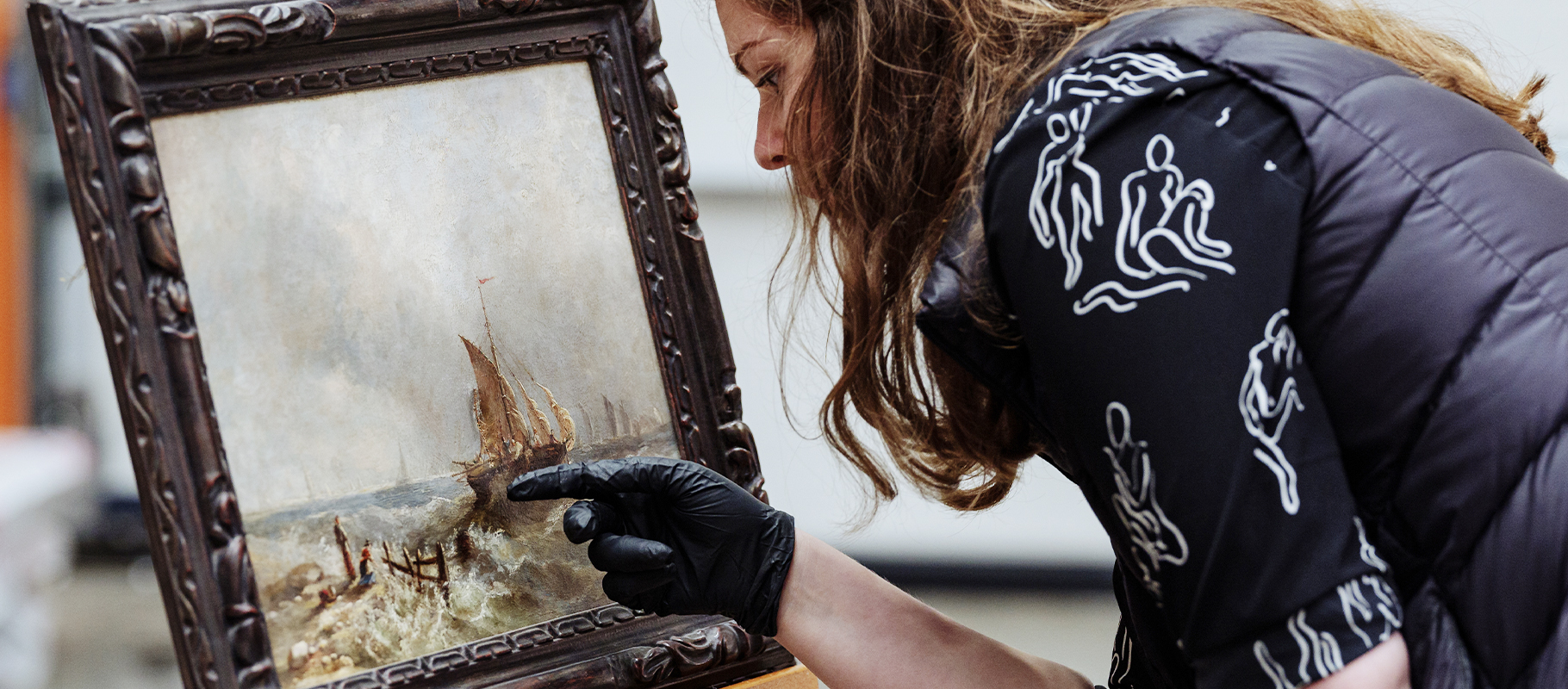 Above: our conservator Sophie analysing a painting in our studio
Above: our conservator Sophie analysing a painting in our studio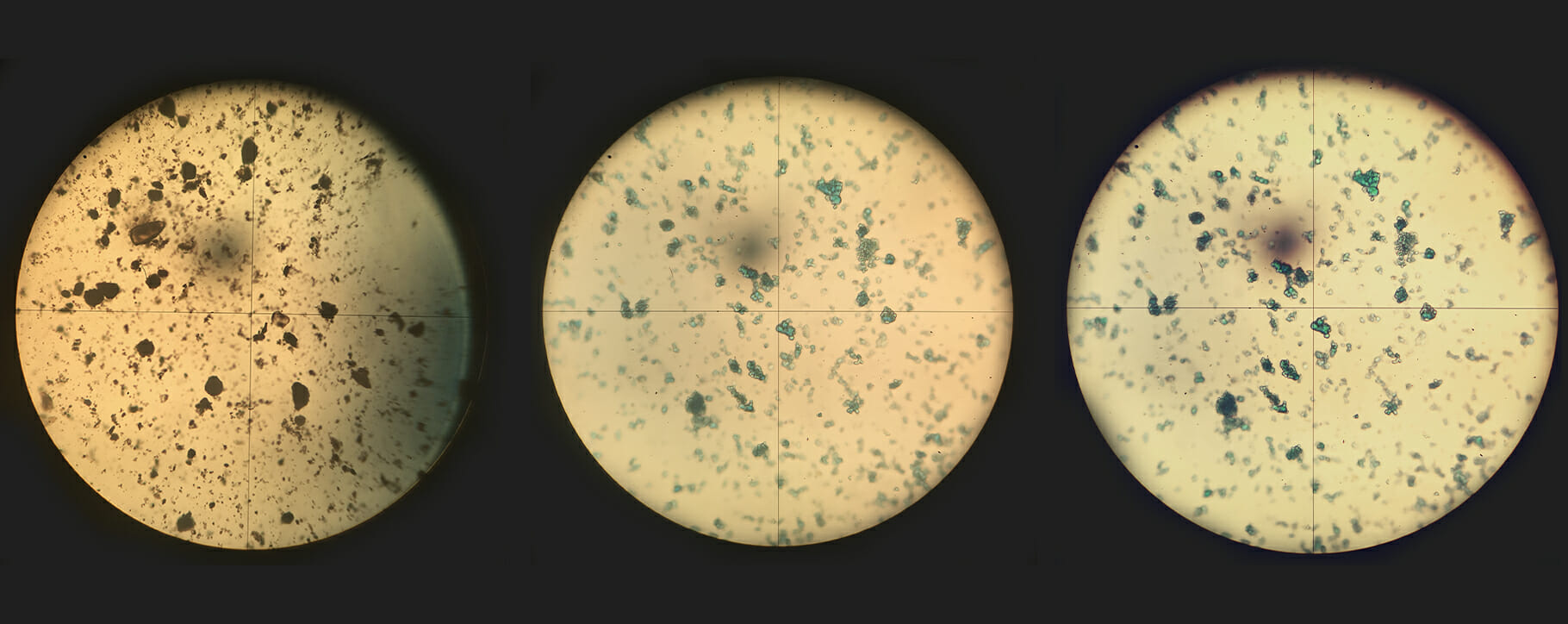 Above: pigments under microscope
Above: pigments under microscope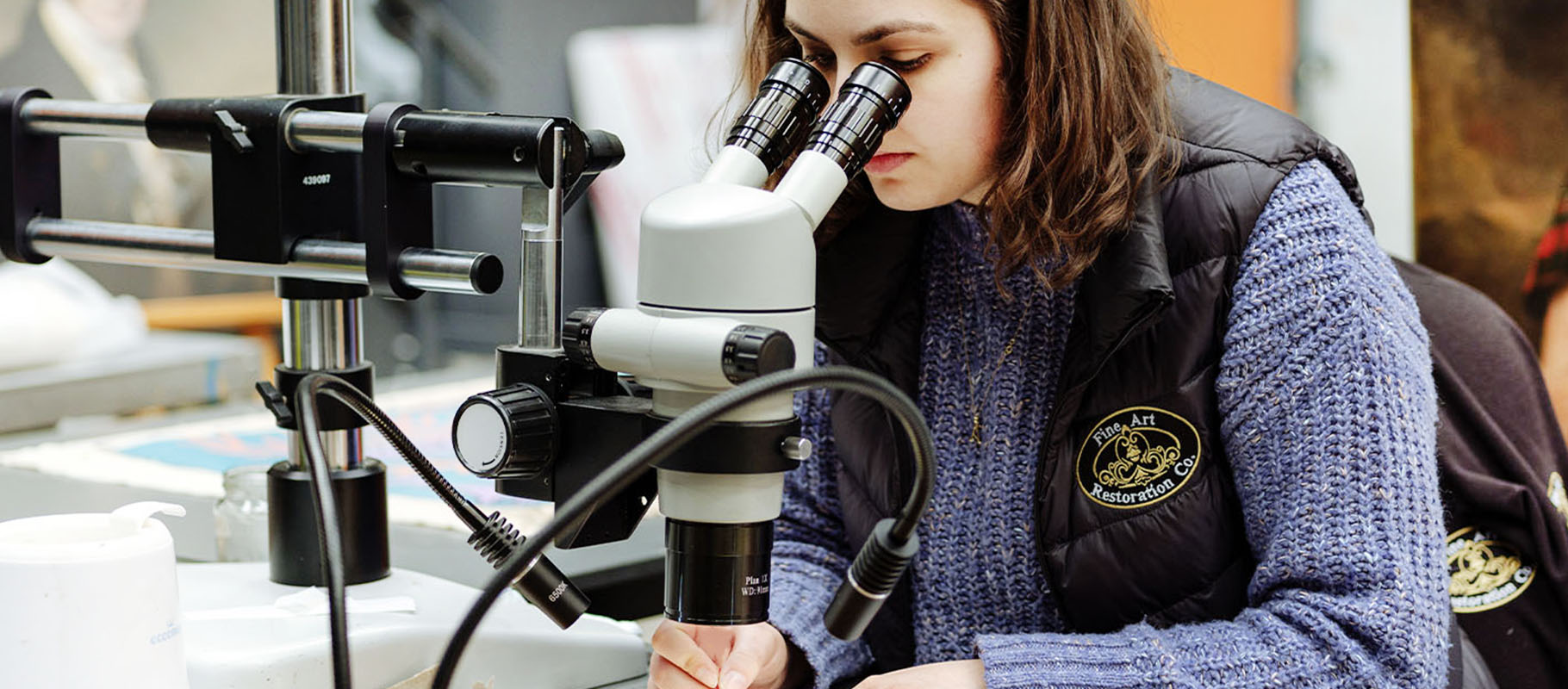 Above: our conservator viewing a painting under microscope
Above: our conservator viewing a painting under microscope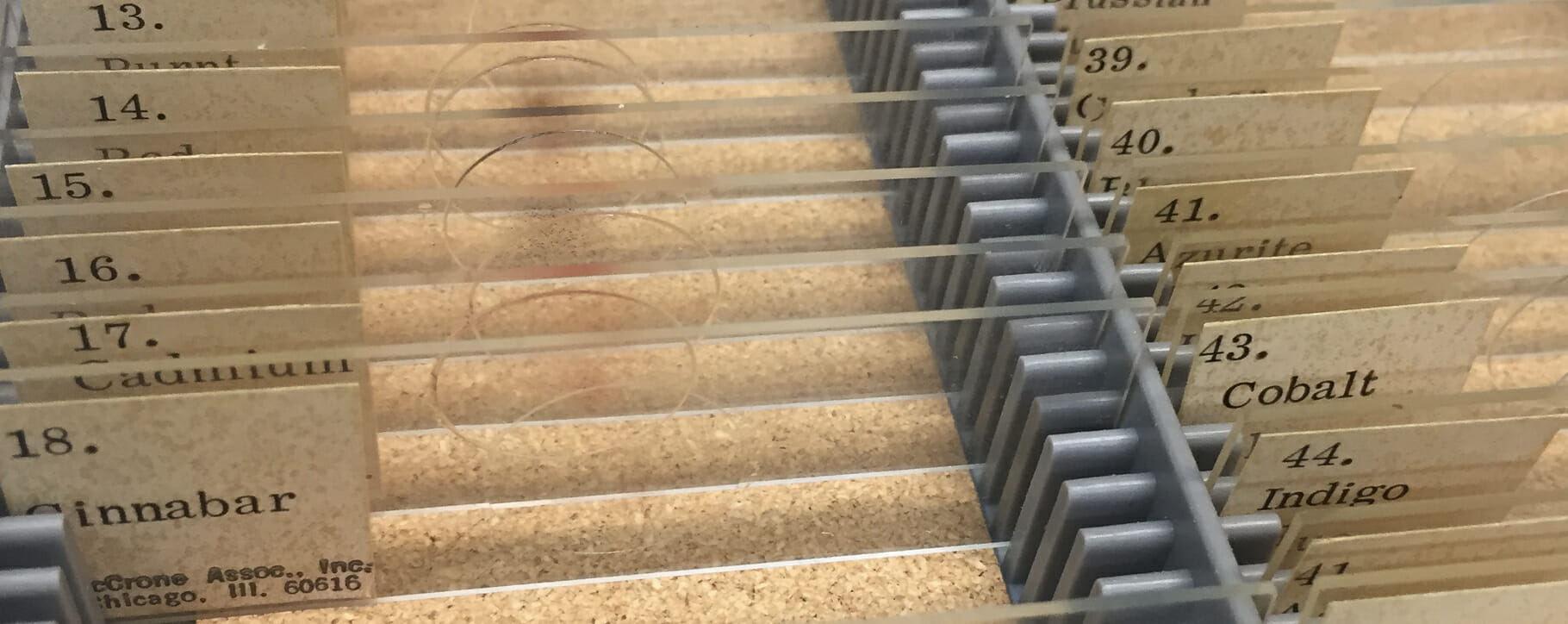 Above: an archive of pigments
Above: an archive of pigments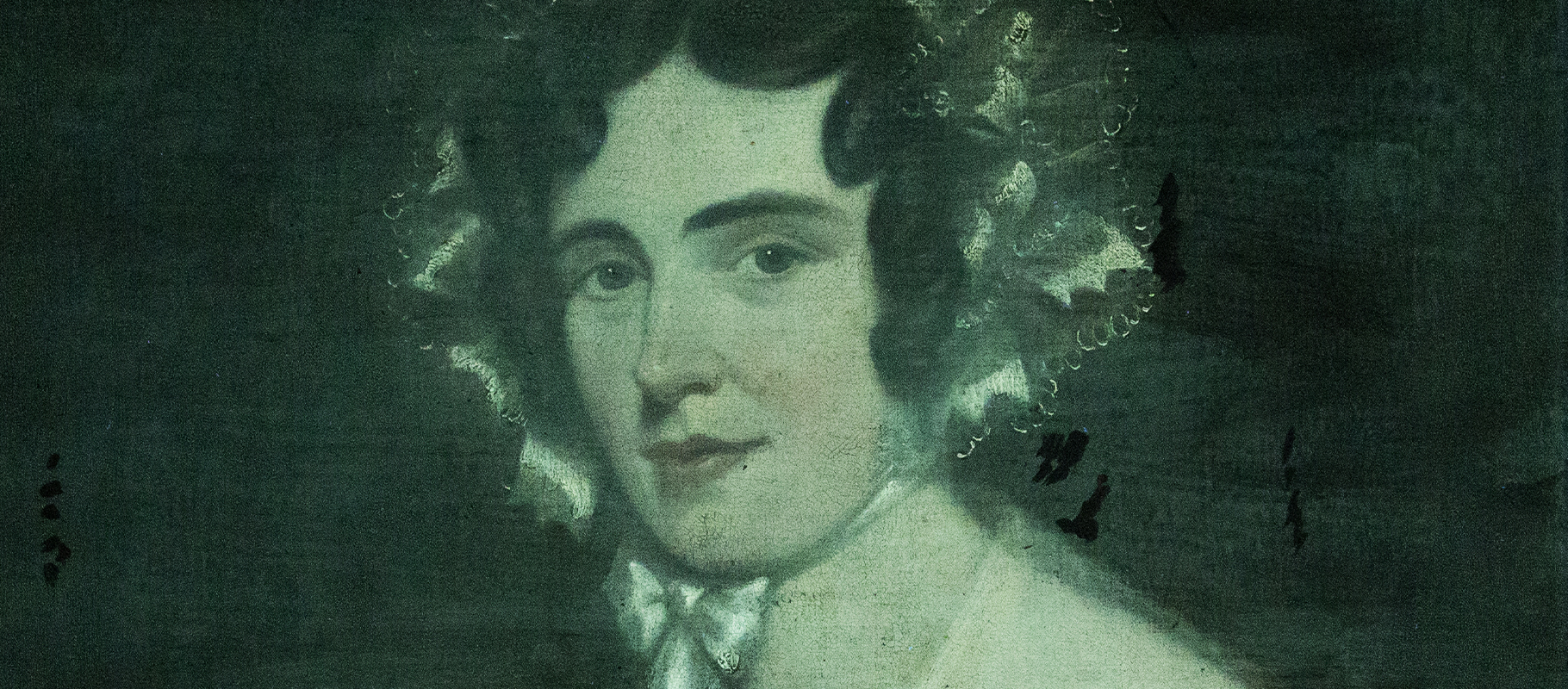 Above: a detail from a Victorian portrait photographed under ultraviolet light
Above: a detail from a Victorian portrait photographed under ultraviolet light  Above: our conservator Sophie assessing a painting in our studio
Above: our conservator Sophie assessing a painting in our studio




